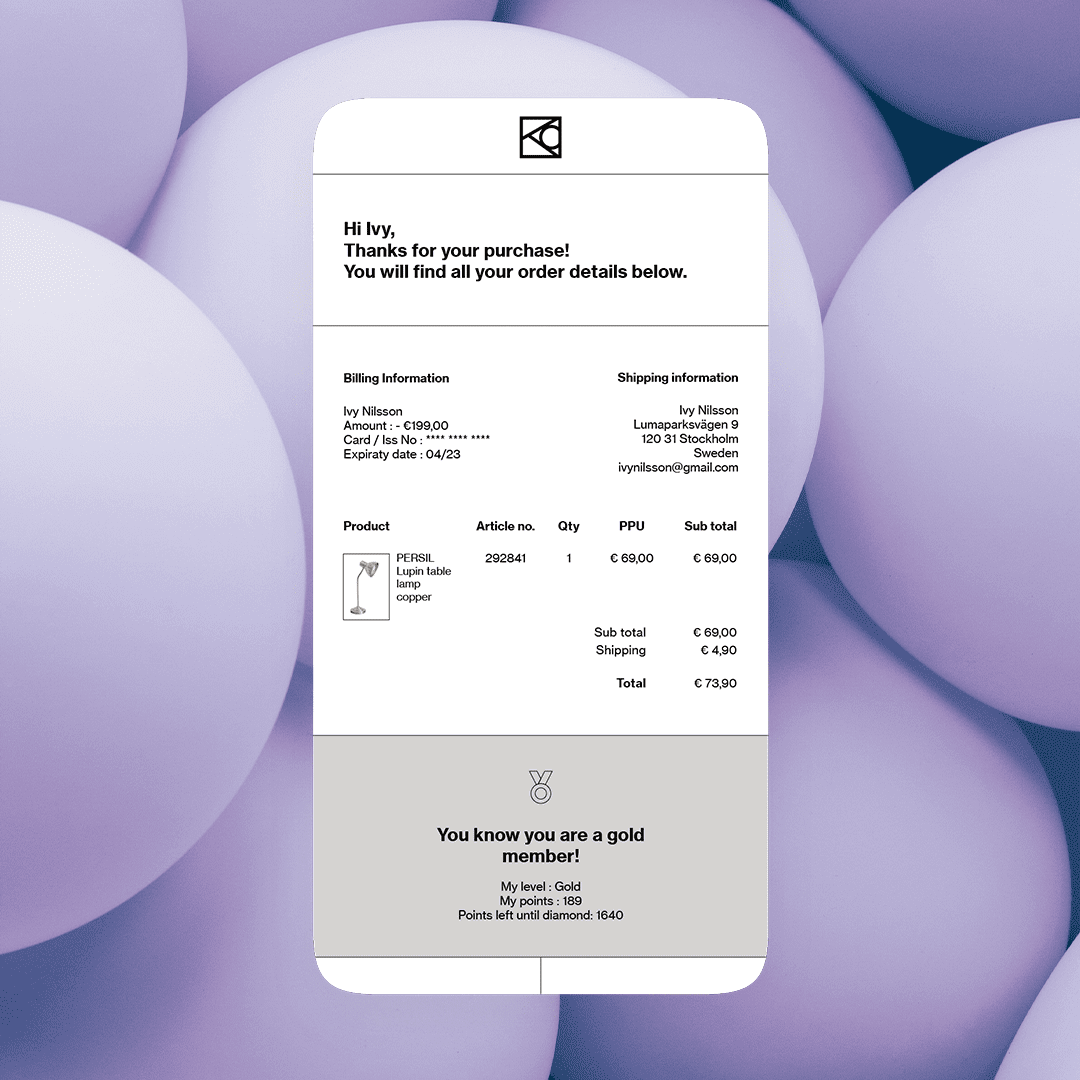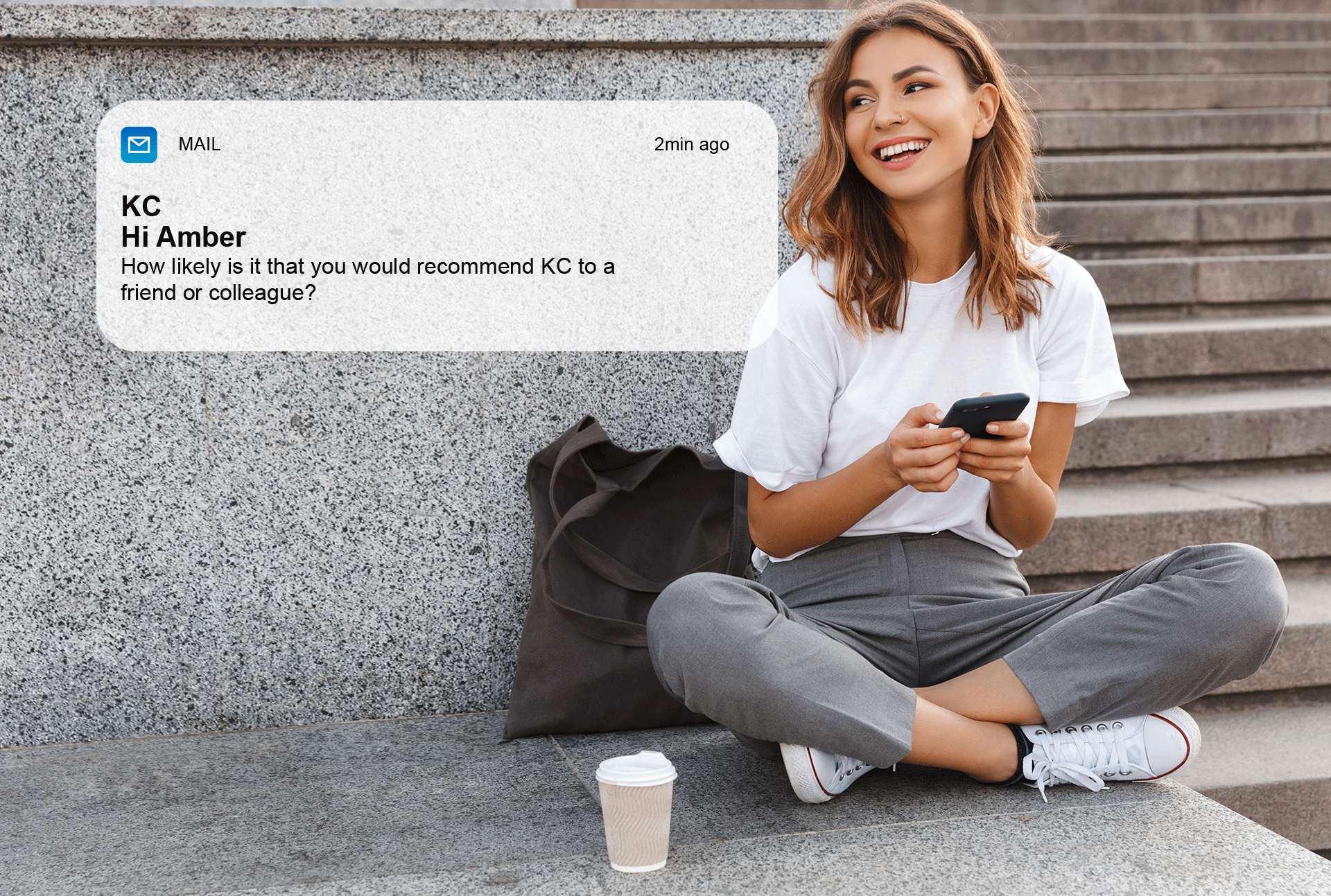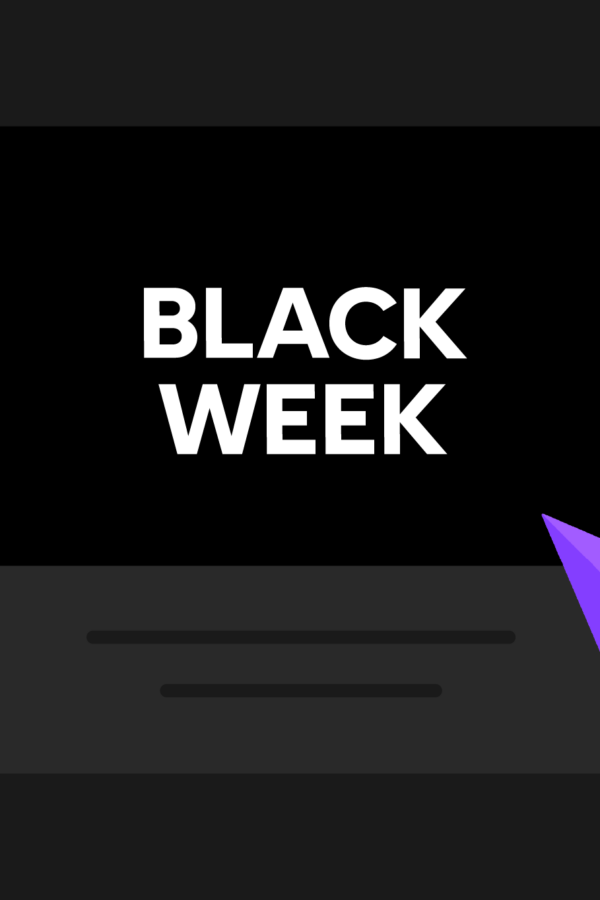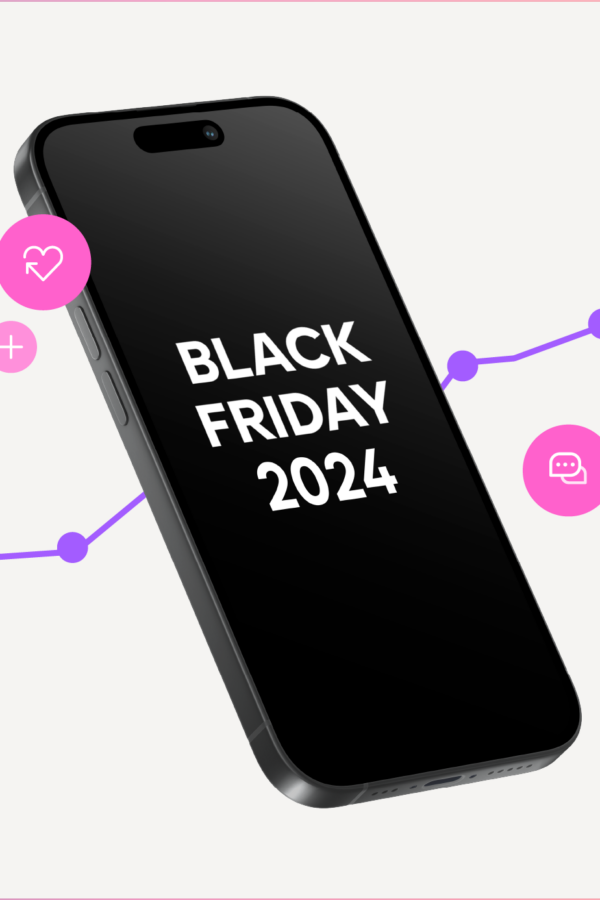10 examples of marketing automation
Here we go. These 10 examples are created for you as a retailer to get inspired by – or just straight up rip-off!
1. A welcome automation
This might just be the most important retail marketing automation of them all: onboarding automation. Show new contacts that you are happy they chose to become a member, and remind them of what they can expect from being a member. Maybe give them a welcome offer to get them to make a second purchase as soon as possible? This is actually so important that we have a whole blog post about welcome automation.
Pro tip: Get a full toolkit of 6 marketing automation templates – make sure to download it here:

2. Birthday
You can’t really show that you care about your customers if you forget their birthdays, can you? These days members of loyalty programs pretty much expect to be celebrated by their favorite brands! Set a trigger to start a few days before a birthday or on the day itself, with a greeting or offer. You can follow up on the automation and remind them of the offer a few days later. A short reminder that the offer is about to expire is usually appreciated.
3. Made a purchase
This should be the biggest automation of them all. Let the customer know that a purchase is only the beginning of their journey with you. You might send a “we hope you like your new item” email with recommended accessories? And then follow up on the communication with “how to care for your new product” communication. This is your opportunity to show that you care more about your customers than whether or not they will make another purchase.
4. Abandoned cart
Around 75% of people leave something in their abandoned cart instead of checking out. But they are not lost opportunities! Take advantage of knowing exactly what the customer is interested in with abandoned cart automation. Statistics show that these reminders usually have an open rate of 50%, and at least 10% of customers come back to complete the purchase! You could also include recommended products in your email, in case this sparks an interest that the previous item quite didn’t get.
5. Social media automation
The segments you use for social media advertising can be flagged as you go depending on whether the contacts respond to your ads or not. Use these flags in your automation to send certain emails to those who have purchased something from the ad, and make sure it doesn’t get advertised to them again. Or flag contacts who have clicked on something but not made the purchase – and have them go a different route in your automation flow. Social media automation is great for strategizing your social media and clearly seeing where each contact ends up in the sales funnel.
Read more: Automate your marketing across every channel
6. Transactional emails
These types of emails have the highest open rates so use this to your advantage! Set up automated emails following a purchase, when an item has shipped or an account has been created. Since the customer is likely to open it, don’t miss the opportunity to recommend some accessories or other products the person might enjoy.

7. External data
Use external lifestyle data to create the most personal automation yet. Did your customer just buy a new house? Begin the automation with products they might need when they are moving, then you follow up with products for decorating and continue to inspire with products as they grow with the new house. Or if they just had a baby, set up automation to get product recommendations right at every stage of the child’s development!
8. Membership levels
We recommend being clear about what your membership means during the onboarding but don’t forget to remind customers of how they can benefit from reaching a new level. Set up automation to encourage them to spend just a little more to reach the next level and then when they do, remind them of the benefits they will receive by being a part of your most loyal customers.
9. Anti-churn
Segment the customer who hasn’t made a purchase in a defined time and try to get them excited about your brand again. You can try a simple “We miss you” email to see if this sparks an interest. If not, you can try to offer them a discount or voucher to come back, if it’s part of your strategy. You can set up many steps in your automation, but you might have to let them go at some stage as inactive members can do more harm than good to your campaigns.
10. Feedback
Don’t forget to follow up! Requesting feedback is perfect for automation so you receive it on a regular basis. Follow up a purchase to see how they liked it, or ask what they’d like to see from the membership or you could ask for input on product development.












